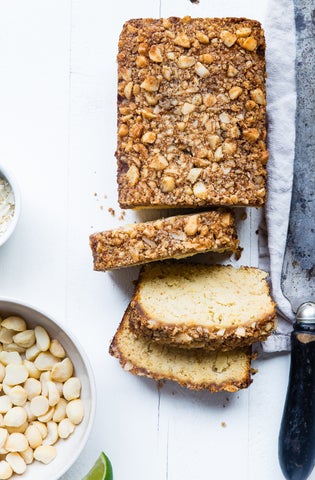Is Gluten-Free Still a Growing Market?
Everyone loves a health trend (and jumping on a seemingly successful bandwagon). Over the past few decades, there’s been an explosion in gluten-free CPG products.
As celebrities and influencers tout the benefits of a gluten-free diet, lots of us have been tempted to try the diet out for ourselves. For many people, this meant stocking up on a growing number of gluten-free CPG products available on supermarket shelves.
But where do we stand today? Is gluten-free dieting as popular as it was? Is it still relevant to your customers and to your brand? Or has the trend already peaked?
Getting to grips with where the gluten-free market is currently at is really useful for CPG brands wondering whether to devote time and energy to this particular product niche.
Why do people choose a gluten-free diet?

First of all, let’s take a look at why people are choosing a gluten-free diet. And why they might be persuaded not to.
Going gluten-free for gluten intolerance
When it comes to people with celiac disease and non-celiac gluten sensitivity, the advice is clear.
Adopting a gluten-free diet will help to prevent gastrointestinal symptoms and, in the case of celiac disease sufferers, any further damage to their small intestine.
Some researchers have found that a gluten-free diet can reduce IBS symptoms too.
Going gluten-free as a lifestyle choice
The advice is a little less straightforward when it comes to the health benefits of a gluten-free diet in general.
Whilst health and wellness gurus have promoted the idea that a gluten-free diet can help you lose weight, have more energy and feel healthier, medical research doesn’t necessarily agree.
There’s evidence to suggest that a gluten-free diet for people without a diagnosed gluten-related disease could actually cause adverse health effects.
The main issue is that by cutting gluten from their diet, people will also be cutting out a range of healthy nutrients, leaving them deficient in these vitamins and minerals.
Nowadays, the risks as well as the benefits of a gluten-free diet are being talked about. So what does this mean for the gluten-free market?
How is the gluten-free market growing? And will the growth continue?
The gluten-free market underwent massive growth between 2012 and 2013. Sales of gluten-free CPG products in the US rose by an incredible 81%, with bakery products making up the largest share of the market.
Growth has since slowed but it has by no means ground to a halt. Estimates state that the global market for gluten-free food will expand from 5.6 billion dollars in 2020 to 8.3 billion dollars in 2025.
We put this down to:
- A growing audience for gluten-free products
- Gluten-free CPG product innovation
The market for gluten-free CPG products is huge
Around 2 million people in the US have celiac disease. A further 20 million Americans are estimated to have non-celiac gluten sensitivity.
Incidence rates of celiac disease have steadily risen, at an average of 8% per year over the past several decades. Experts think environmental factors and increased awareness of the disease have led to this increase.
Added to this number are all of the people who believe they have some form of gluten intolerance despite not having an official diagnosis.
And all the people who pursue a gluten free diet as a lifestyle choice rather than a medical necessity. According to a 2017 survey of US shoppers, 31% who ate gluten-free bread fell into this category.
Add all of those groups together and you see there’s still a huge market for gluten-free CPGs.

New gluten-free trends are making products even more appealing
In the early days of gluten-free innovation, products didn’t always taste as good as they looked. Over the past few decades a lot has changed and the new discoveries just keep coming.
Gluten-free CPG products with better nutrition
Whether consumers are choosing a gluten-free diet for medical or lifestyle reasons, research shows that it can leave them deficient in a range of essential nutrients. The industry is taking steps to address this issue.
They’re adding vitamins and minerals to their foods. These include calcium, folate, iron, niacin, pyridoxine, riboflavin, thiamin, vitamin B12, vitamin D and zinc. In addition, some brands are adding fiber supplements to their gluten-free CPG products.
By making gluten-free products as rich in nutrition as the wholegrain products they replace, brands are successfully countering one of the key concerns about gluten-free cuisine.
Gluten-free CPG products with better taste and texture
Gluten-free CPG brands haven’t been resting on their laurels. They’ve continued to push at the limits of gluten-free product development – making products more closely resemble their glutenous alternatives.
Scientific progress has meant that gluten-free pizza crusts now have a better crunch. Bakers are using new mixtures of gluten-free flours and starches to produce ever-better loaves of bread. New products, like Artesa chickpea flour, allows product developers to create gluten-free pasta that tastes as good as the real thing.
There’s now a lot less compromise in terms of taste and texture than there used to be for gluten-free dieters.
Gluten-free CPG products made with ancient grains
Ancient grains are grains that haven’t been altered by breeding over the past several hundred years. They include amaranth, quinoa, buckwheat, millet and teff. And they’ve been growing in popularity.
These ingredients are completely gluten-free and have been incorporated into products, improving their nutritional value, taste, texture and sustainability. Consumers can now find gluten-free waffles, pretzels, cookies and chips all infused with nutrient-dense ancient grains.
Crossover certification and appeal
By ticking a couple of different boxes, gluten-free CPG brands open up their products to new audiences – often without changing ingredients or production. Many brands are choosing to highlight the full variety of dietary benefits their products offer.
That means their foods and beverages come to the attention of consumers searching for organic, high fiber, high protein, or free from soy products. With the right labelling, they also attract consumers following other fashionable diets – like no-grain or paleo.
Other food trends finding success
It seems there’s a long way to go yet before giving up on your gluten-free CPG product line. But any good business owner is already looking way into the future.
Should a gluten-free lifestyle fall out of fashion, it’s a good idea to have a few other tricks up your CPG sleeve. Here are a few food trends currently rising up the agenda.
Plant-based cuisine
Researchers expect the plant-based food market to grow at a compound annual growth rate (CAGR) of 11.9% between 2020 and 2027.
So far, the market has focused on alternatives to meat – particularly red meat like burgers, sausages and mince. But CPG brands are now expanding into plant-based seafood.
Products that replicate the flavor and texture of fish – like plant-based salmon, fishcakes and shrimp – are making their way onto supermarket shelves, helping consumers to cook and eat dishes they love without harming the planet.
Breakfast
Whilst many people are heading back to the office, the COVID-19 pandemic has left a lasting impact on how and where we work. A considerable section of the population will continue to work from home post-COVID.
Time-strapped commuters may opt for a quick grab-and-go breakfast option. But for those stay-at-homers, breakfast will be more of an event, with cereal out and cooked breakfasts in.
Eco-conscious and transparent packaging
People have never been more aware of how their food and drink choices impact the planet and its people.
That means more consumers are keen to know that packaging can be recycled – or even refilled as part of a circular economy. Sixty to seventy per cent of consumers say they would pay more for sustainable packaging.
Consumers also increasingly expect transparency from brands. It should be easy for them to find out exactly what ingredients are included in a product and what your supply chain looks like.
Gut health
Gluten-free diets may not be as high up the agenda as they once were. But that doesn’t mean people are obsessing any less over their gut health.
There’s emerging research to show that our gut microbiome – the collection of bacteria and fungi living in our digestive tract – can have a huge impact on our overall health and wellbeing.
Experts recommend fermented food and beverage products – like kefir, kombucha, kimchi and sauerkraut – to people looking to achieve a diverse (and healthy) gut microbiome. As a result, the global market for fermented food and beverages is expected to increase at a CAGR of 6% from 2019 to 2027.
Finding the right partners for your gluten-free CPG brand
Whatever CPG products you’ll be creating over the next few years, it’s good to find partners who understand your ideas, your ethos and your objectives.
Buffalo Market is a leading distributor of mission-driven food and beverage products. We know that diet trends may come and go – but that taking care of our health and that of the planet is no passing fad.
We work hard to get your healthy, sustainable CPG products out to a bigger audience, delivering to mainstream and upstart retailers as well as food service establishments.
Want to see how far we could take your brand? Fill in this quick form, tell us what makes your brand tick, and we’ll get back to you soon.



